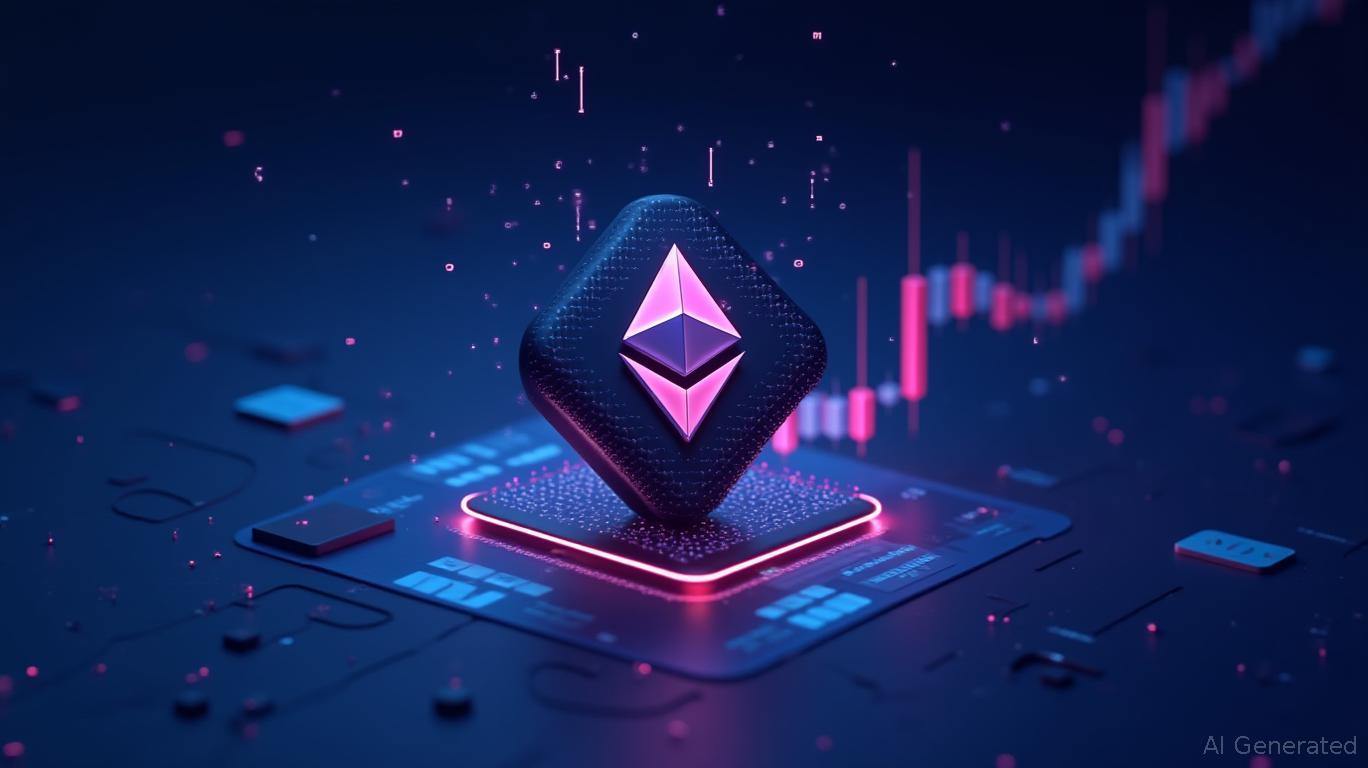SharpLink Gaming's Ethereum Gamble: Risky Roll of the Dice or a Blockchain Masterstroke?

The recent meteoric rise of
(NASDAQ: SBET)—a 2,000% surge in less than a month—has thrust this once-obscure iGaming marketing firm into the spotlight of institutional crypto investing. At its core, the frenzy stems from a bold strategy: replacing traditional corporate reserves with Ethereum (ETH), positioning itself as the first Nasdaq-listed company to do so on such a scale. But beneath the headlines lies a precarious balancing act between transformative potential and existential risk. For investors, the question is stark: Is this a visionary pivot to blockchain's future, or a high-stakes gamble on volatile assets and regulatory quicksand?The Ethereum Treasury Play: A Bitcoin-Style Moonshot?
SharpLink's pivot mirrors MicroStrategy's Bitcoin (BTC) treasury strategy, which has made it the largest BTC holder among public companies. However, unlike MicroStrategy's steady accumulation, SharpLink's move is both faster and riskier. The company raised $425 million via a private placement in late May 2025, with insiders like Ethereum co-founder Joseph Lubin's Consensys Software purchasing shares. The funds are earmarked to buy ETH, which now constitutes the firm's primary treasury reserve. Lubin's appointment as Chairman signals a deep integration with Ethereum's ecosystem, including potential Web3 gaming ventures.
The initial announcement sent SBET shares soaring 49% on May 29, but volatility soon followed. After-hours trading on May 30 saw a 23.79% plunge as investors grappled with the dilution threat of a $1 billion share offering and regulatory uncertainty. The stock's subsequent recovery—closing at $76.70 despite after-hours turbulence—hints at market ambivalence: enthusiasm for the crypto angle is tempered by skepticism over execution.
Sustainability of the ETH Treasury Strategy: Three Key Uncertainties
Regulatory Overhang:
The SEC's stance on ETH's classification—whether a security or a commodity—remains unresolved. If deemed a security, SharpLink's holdings could face stringent compliance requirements, complicating its strategy. The company's SEC filing explicitly cites this risk, noting that such a classification could “materially and adversely affect” its operations.Price Volatility:
ETH's value has fluctuated sharply in 2025, rising 36% from $1,800 to $2,450 in Q2 but still below its 2021 peak. SharpLink's $425 million initial stake would translate to roughly 173,000 ETH at current prices—a significant exposure to crypto market cycles. A sustained downturn could gut the firm's balance sheet.Operational Relevance:
SharpLink's core business—performance-based marketing for sports betting and iGaming—has struggled, with a five-year revenue decline of 19.4% and a -170.6% pretax margin. The Ethereum strategy is a Hail Mary to reposition the company, but its ability to monetize ETH beyond holding it (e.g., staking, DeFi) remains unproven.
Restricted Float: A Double-Edged Sword for Investors
The stock's volatility is exacerbated by a restricted float, with only 2 million shares available for trading out of 69 million issued. This minuscule liquidity pool creates extreme price sensitivity to buying/selling pressure, as seen in the 36% drop on June 2 after the $1 billion offering's details emerged.
While low float can amplify gains for early holders, it also magnifies risks. Institutional investors may hesitate to commit capital in such a liquidity-starved market, and sudden sell-offs—driven by dilution fears or regulatory news—could trigger a death spiral. The restricted float acts as both a rocket booster and a potential crash barrier.
Investment Thesis: Proceed with Calculated Caution
Bull Case:
- Lubin's leadership and Consensys' tech expertise could fast-track Web3 gaming innovations, creating new revenue streams.
- ETH's adoption as a reserve asset could stabilize balance sheets if crypto prices rebound.
- Institutional demand for ETH exposure via a public company could drive long-term interest.
Bear Case:
- Regulatory setbacks (e.g., SEC classifying ETH as a security) could force divestment or costly compliance.
- Core business decline and dilution from the $1 billion offering may deter investors.
- Crypto winter 2.0 could erase gains from ETH holdings, leaving SharpLink's fundamentals exposed.
Actionable Takeaways for Investors
Aggressive Traders:
Consider a speculative short-term position using options or leveraged ETFs to capitalize on volatility. Monitor ETH price movements and regulatory headlines closely.Long-Term Holders:
Wait for stabilization post-dilution and clearer regulatory clarity. Look for signs of operational turnaround in its gaming marketing business to complement the crypto play.Avoid at Current Levels:
The stock's extreme volatility and lack of earnings visibility make it a high-risk trade unless investors are prepared for roller-coaster swings.
Conclusion: A Gamble Worth the Odds?
SharpLink's Ethereum strategy is a high-stakes bet on crypto's institutional future. While the move has undeniable vision—aligning with trends in decentralized finance and blockchain gaming—the execution risks are monumental. For now, the stock's wild swings reflect a market torn between optimism and pragmatism. Investors must ask: Is this a once-in-a-decade opportunity to back a crypto pioneer, or a trap for the unwary? The dice are rolling—place your bets wisely.

Sign up for free to continue reading
By continuing, I agree to the
Market Data Terms of Service and Privacy Statement

Comments
No comments yet